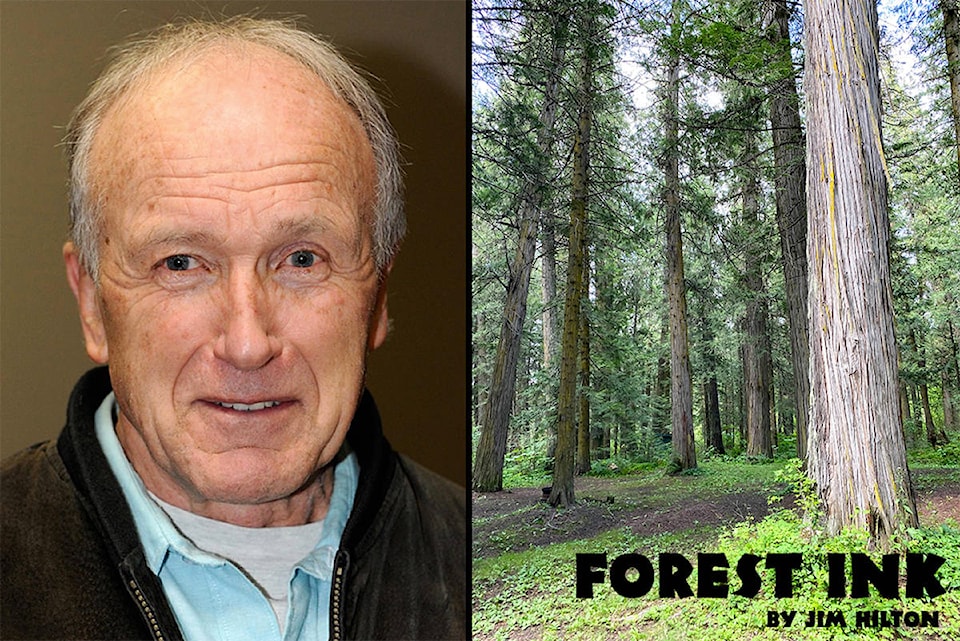During one of my trips on Highway 20, I noticed what appeared to be many dead or dying Douglas-fir trees a few kilometres on either side of the bridge over the Fraser River. Mature and immature fir trees were being defoliated leaving many with a very ragged appearance compared to the healthy trees. From a higher vantage point up Chimney Valley there are large areas on upper elevations that also appeared brownish.
The full extent of the attack will be confirmed from aerial surveys and ground checks conducted this summer and fall but the results will not be available until the early part of 2022. After an Internet search, I found a 2020 Ministry of Forests Health Overview for South B.C. published in February 2021 which indicated there appeared to be a decline in Western Spruce Budworm according to some of the mapping that was done.
Defoliation was mapped along the Fraser River from Williams Lake south to Tom Hutch Lake and 42 of 63 egg mass sampling sites indicated that no defoliation is expected in 2021. I suspect that the unprecedented heat wave this summer may have stressed the trees and increased the anticipated impact of the budworm.
In order to better identify and understand how this insect impacts our forests the following information may be useful. In this area the spruce budworm is a bit of a misnomer since it is Douglas-fir that is attacked. The following information is from a federal publication.
The Western Spruce Budworm requires one year to complete its life cycle. Budworm moths mate and lay eggs in late July through August. The eggs are laid in masses (up to 150) on the underside of needles, overlapping like fish scales. They are bright green when laid, measuring slightly less than one cm in total length, and become translucent when empty. They hatch within 12 days of being laid.
As buds swell in the spring (late May), larvae migrate and begin to feed, initially mining the needles, and then moving onto the developing buds and cones. With bud flush, larvae feed on the new shoots, subsequently moving onto older foliage, spinning loose webs around new foliage and feeding within them during the fifth and sixth instars. Later instar larvae range from 16-30 mm long.
The upper body is yellow-brown with conspicuous paired ivory coloured spots on its body segments. The head capsule is brown. Feeding continues through late June to early July, at which time the larva pupates. It is reddish brown in colour and lasts on average two weeks. Adults emerge between mid-July and early August, mate and lay eggs on host foliage. They die within two weeks of emergence. They are inconspicuous looking insects, mottled grey to rusty brown in colour, with a wingspan of 24-30 mm.
READ MORE: Corporate agenda versus long-term community goals
The greatest impact from budworm is among suppressed and intermediate trees. Repeated budworm defoliation causes tree mortality over large areas, reduction of growth rates and reduced lumber quality. Sustained attack results in complete defoliation in four to five years. Once an infestation has subsided, defoliated trees take several years to regain a full foliage complement, and therefore radial growth rates require several years to attain normal growth following defoliation by the budworm. Successive years of defoliation in stands may predispose trees to other insects and pathogens. Tree mortality may continue due to root disease, bark beetles, loss of vigour and other causes and have a significant impact on Canada’s forests. Since 2000, the western spruce budworm defoliates, on average, more than 500,000 hectares of mapped forest annually.
Jim Hilton is a professional agrologist and forester who has lived and worked in the Cariboo Chilcotin for the past 40 years. Now retired, Hilton still volunteers his skills with local community forests organizations.
Like us on Facebook and follow us on Twitter.
